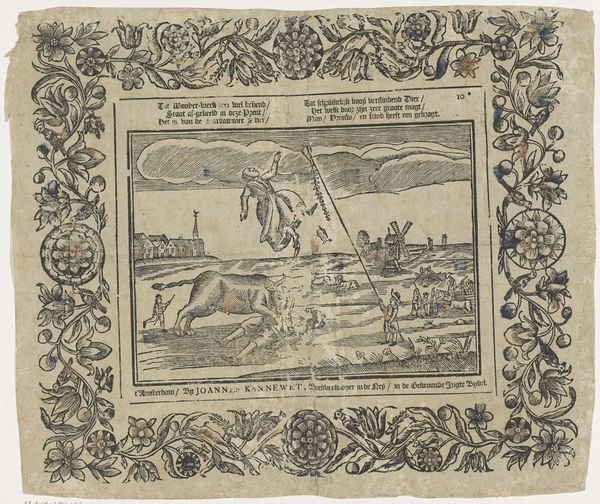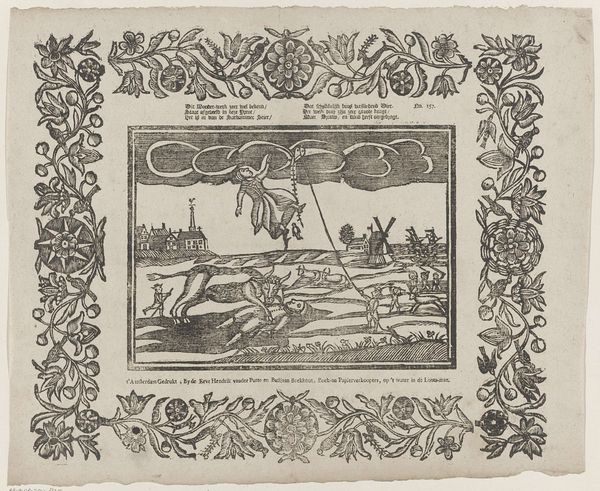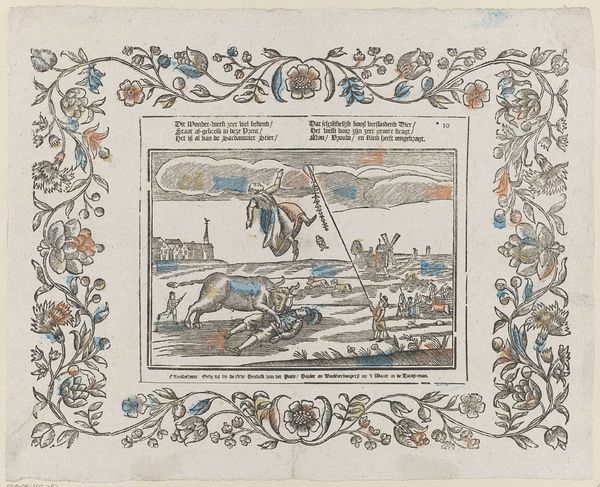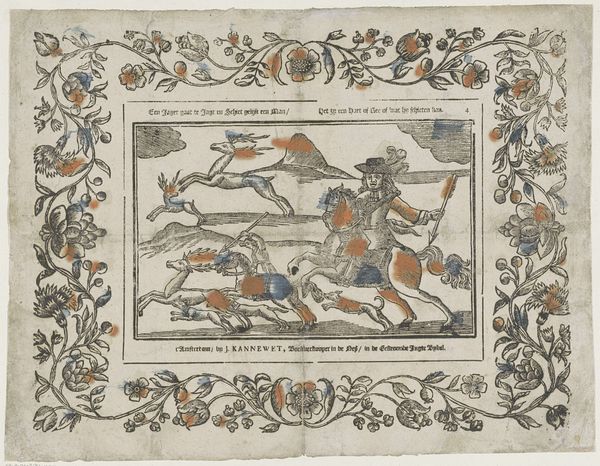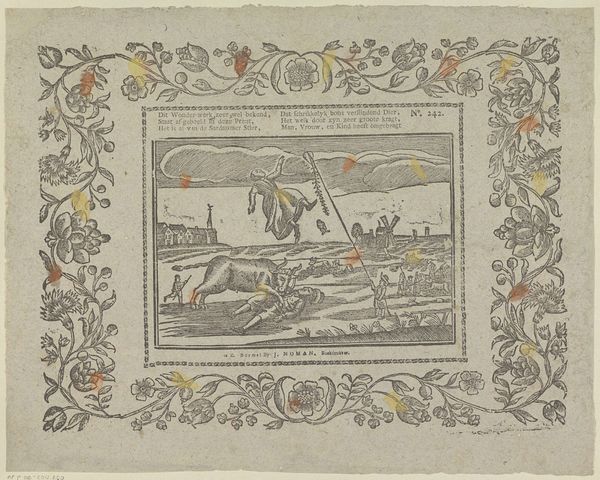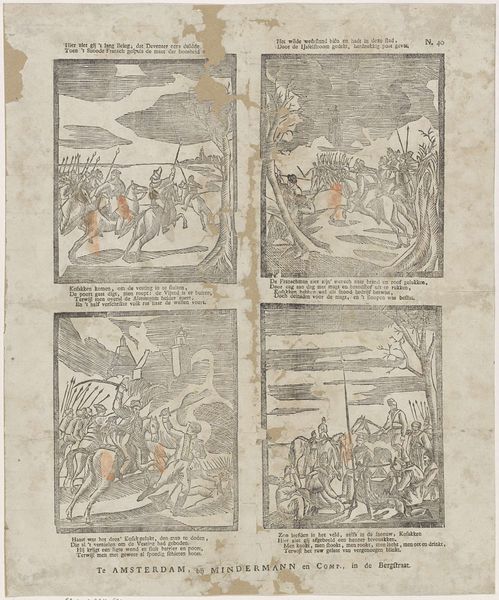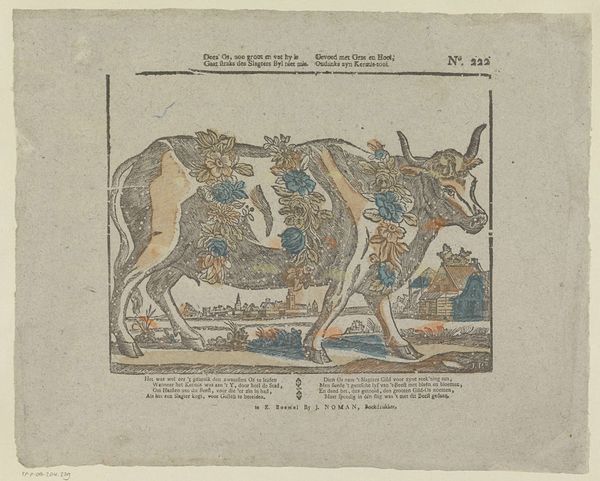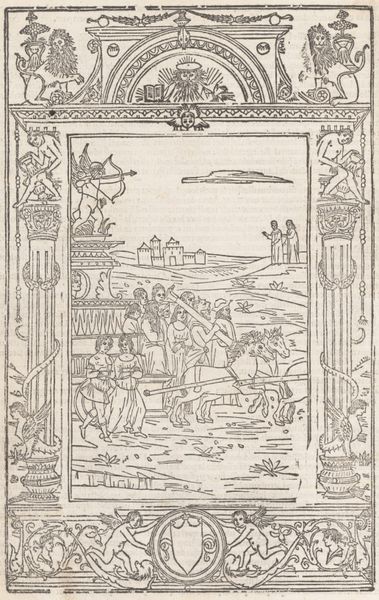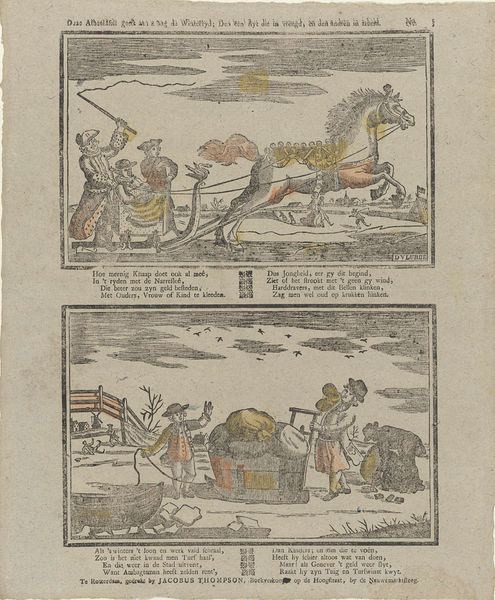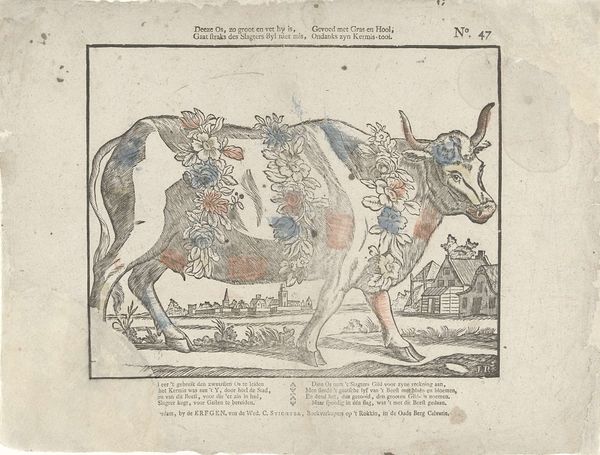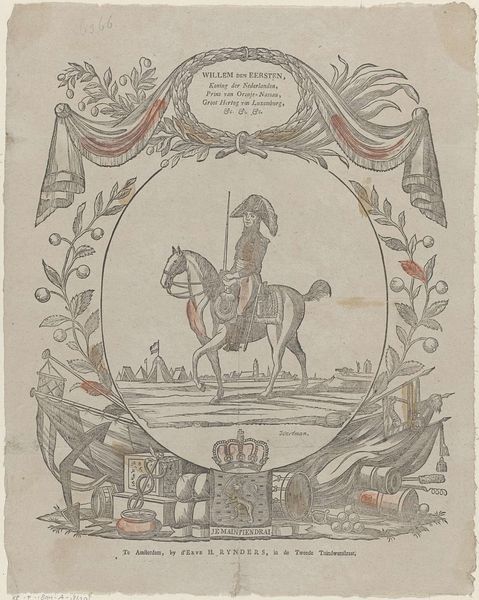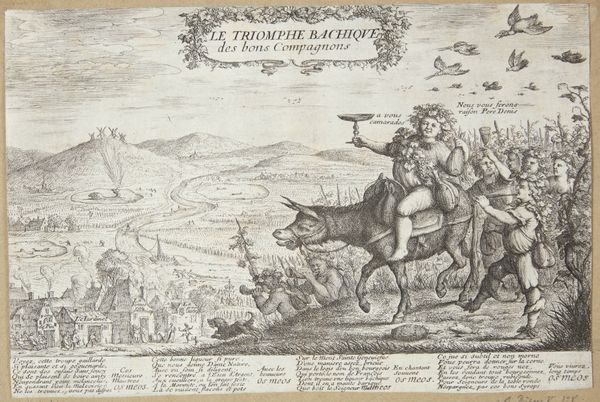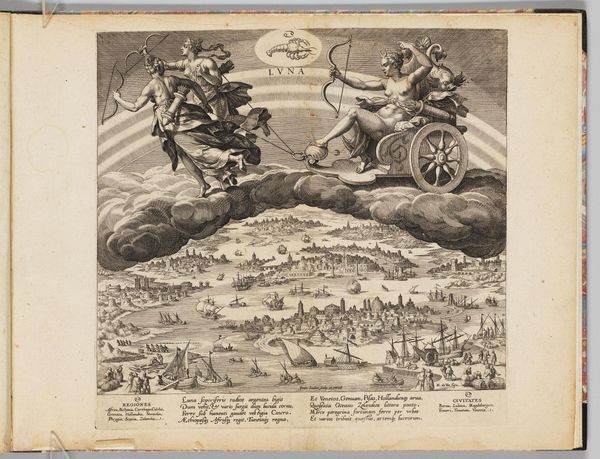
Dit wonder-werk zeer wel bekend / Staat af-gebeeld in deze prent (...) 1715 - 1813
0:00
0:00
ervenweduwecornelisstichter
Rijksmuseum
Dimensions: height 292 mm, width 394 mm
Copyright: Rijks Museum: Open Domain
Curator: This engaging print, dating from somewhere between 1715 and 1813, carries the long title "Dit wonder-werk zeer wel bekend / Staat af-gebeeld in deze prent (...)," translating to "This miracle is well known / Shown in this print…”. It is attributed to the heirs of the widow Cornelis Stichter and is now held in the Rijksmuseum. It presents a fascinating tableau framed by an ornate floral border. Editor: It's certainly a bizarre scene at first glance. The engraving technique gives it a crude, almost unsettling energy. I immediately wonder about the specific sociopolitical contexts that informed the production of this sort of imagery. Curator: The printmaking process itself is quite relevant. Engravings like this were relatively inexpensive and readily reproducible, making them a potent medium for disseminating specific narratives to a broader audience beyond the wealthy elite. Consider the skill needed to execute all this precise line work and how this allowed images like these to spread ideologies more broadly. Editor: Precisely. So, given this access, we should question: Whose story is being told here, and for what purpose? This seems to be a highly gendered scene, a sort of cautionary tale, perhaps. I'm interested in exploring its implications about gendered violence. Curator: Looking closer at the composition and iconography can certainly provide additional material insights. We can note the figures within the landscape—a charging bull, a falling man, and others seemingly impacted by its force. The scale of the figures in relation to each other is of significance. The artist seems to be conveying that these seemingly normal people can become the easy target of powerful figures. Editor: It's compelling to think about the potential intersectional messages the print carries, particularly about societal hierarchies and the abuse of power. Are we seeing here a depiction of something like the precarity of existence under patriarchal structures? Is this an example that we might find in the social and historical context of Dutch political cartoons? Curator: Your emphasis on power is on point. This small engraving allows us to delve into complex social themes regarding the vulnerable condition of the powerless against established strength and violence. The materials of this artifact help show us how the artist translated political concepts for ordinary individuals. Editor: Examining such pieces enables a richer understanding of marginalized identities. And prompts necessary discussions of how narratives—visual or otherwise— shape and impact marginalized groups and wider society.
Comments
No comments
Be the first to comment and join the conversation on the ultimate creative platform.
